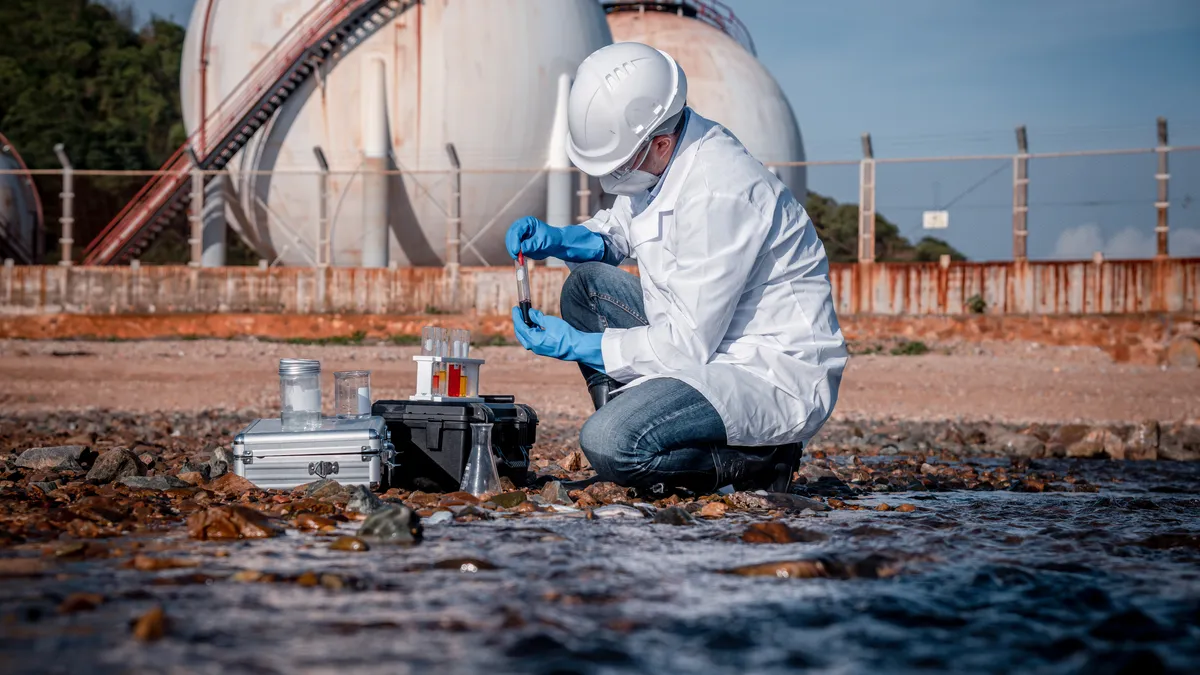AdvaMed CEO Scott Whitaker told a congressional hearing Wednesday that the current version of a proposed regulation aimed at curbing ethylene oxide (EtO) emissions would “bring surgeries and procedures in some cases to a screeching halt.”
The Environmental Protection Agency’s plan to limit EtO emissions and efforts to tighten regulations on polyfluoroalkyl substances (PFAS) were the focus of the House Environment, Manufacturing, and Critical Materials subcommittee hearing.
“You would have supply shortages in hospitals that we've never seen before,” Whitaker told legislators.
The EPA is required to issue a final rule on EtO limits by March. The colorless gas is used to sterilize medical devices — accounting for about half of all sterilized devices — but is also carcinogenic. The EPA expects its regulations to reduce EtO emissions by 80% and lower the cancer risks for people who live near sterilization facilities.
The lobbying group for medical device companies was joined at the hearing by a scientist who discussed the health effects of proposed regulations.
Tracey Woodruff, director of the University of California San Francisco’s Program on Reproductive Health and the Environment, said that the EPA concluded EtO inhalation is carcinogenic to humans in 2016, after external peer review and public comment. Studies also find the chemical is associated with neurological, respiratory and reproductive harm, Woodruff added.
“Multiple communities in the U.S., often low-income and communities of color, are exposed to dangerous levels of ethylene oxide from sterilization facilities. EPA now has an opportunity to significantly reduce exposures to cancer-causing EtO by issuing a necessary update to its emission standards for sterilization facilities,” Woodruff said.
Medical device companies have spoken up before about their concerns with the EPA’s proposal. Whitaker said at the hearing that sterilization is currently at capacity, and no new facilities are being built. Medtech companies are working to develop new sterilization methods, but none currently match EtO for its scale and effectiveness, he said.
PFAS regulations
The EPA proposed a rule in March that would limit six types of PFAS, also known as “forever chemicals,” in drinking water. It also finalized a rule in September that would require all manufacturers of PFAS or devices containing the chemical to disclose certain information, including environmental and health effects and worker exposure.
Whitaker said that many medical products, including C-PAP machines, prosthetics, IV bags and surgical instruments, contain PFAS.
“It’s essential that any regulation on PFAS takes into account the manufacturing and availability of essential medical devices,” he added.
Woodruff said PFAS encompass 12,000 different chemicals. Although the EPA’s proposal would limit only six types of PFAS in drinking water, the agency expects the change to provide up to $2 billion in health benefits.
PFAS are associated with cancer risks, lower birth weights for babies, cardiovascular risks due to cholesterol changes and thyroid problems, Woodruff explained, citing a review by the National Academies of Sciences, Engineering and Medicine.
Woodruff acknowledged the other witnesses at the hearing, including the CEO of AdvaMed, the CEO of a multinational chemical company and the CEO of the American Chemistry Council
“It is important to hear from all affected stakeholders,” Woodruff said. “However, it is also critical we prioritize health and environmental regulations and use science free of financial conflicts of interest or bias toward the industries that may have a vested financial interest in minimizing EPA’s regulations.”













